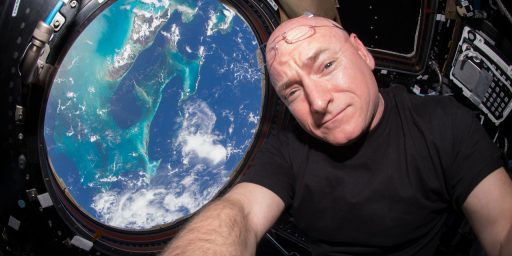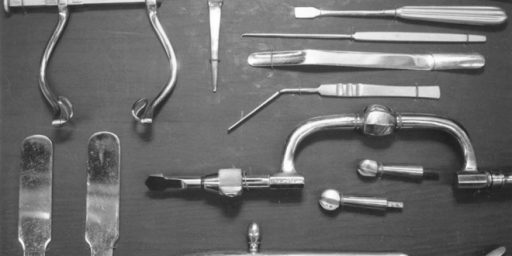Building Better Bodies by Bioengineering
Nicholas Kristoff, who presumably knows approximately as much about genetic engineering as I do–which is to say, not a hell of a lot–has a column today lamenting the possibility that promising gene therapies will be abused.
Belgian Blues are unlike any cows you’ve ever seen. They have a genetic mutation that means they do not have effective myostatin, a substance that curbs muscle growth. A result is that Belgian Blues are all bulging muscles without a spot of fat, like bovine caricatures of Arnold Schwarzenegger. These mutants may also point to the future of humans, particularly athletes. Gene therapies are being developed that would block myostatin in humans, and they offer immense promise in treating muscular dystrophy and the frailty that comes with aging. But once this gene therapy becomes available for people who really need it, it’ll take about 10 minutes before athletes are surreptitiously using it, particularly because, in contrast to today’s doping, gene therapy leaves no trace in the blood or urine.
The standard human shape would become different, and anyone with money could look like a body builder. As H. Lee Sweeney, chairman of physiology at the University of Pennsylvania School of Medicine, writes in a fascinating article in July’s Scientific American, “The world may be about to watch one of its last Olympic Games without genetically enhanced athletes.” Even more important, gene therapy goes to the heart of an issue that will turn our species upside down in the coming decades. We are beginning to understand our own operating system – genes – and we’re gaining the ability to try to “improve” our genetic endowment. If we do so, the ramifications could be as enormous as when our ancestors first crawled out of the slime to live on land.
Genetic tinkering gives me the willies. My concern is not so much the details of blocking myostatin, although Belgian Blue calves are so muscled that their mothers are at high risk of dying while giving birth, as with the possibility that we will irreversibly change what it is to be human. Geneticists have tried to improve apples over the last 50 years, producing larger, prettier species that just aren’t as tasty or as interesting as they used to be; it would be a tragedy if we did to humans what we’ve done to apples.
Certainly, the prospect of future humans being less tasty or interesting is worrisome. Still, how cool would it be for us all to be built like bodybuilders without, you know, all that work? Let alone dangerous steroids. Plus, we could eat what we want and all that time people spend at the gym simulating productive work could instead be channeled to something more beneficial, like Internet surfing or video games. And, really, wasn’t crawling out of the slime to live on land a good thing?






The greenies would never allow a bio-engineered human being to be released into the wild.
As a side note. Bulging muscle without stronger bone will mean lots of bone breakage.
More broadly, human success has come from the fact that we are among the most adaptable species in behavior. We are the best generalists. All proposals for the genetic tinkering of anything that I have seen are, like dog breeding, tilted toward some form of specialization–all very well if Nature never changes, but suspect otherwise.